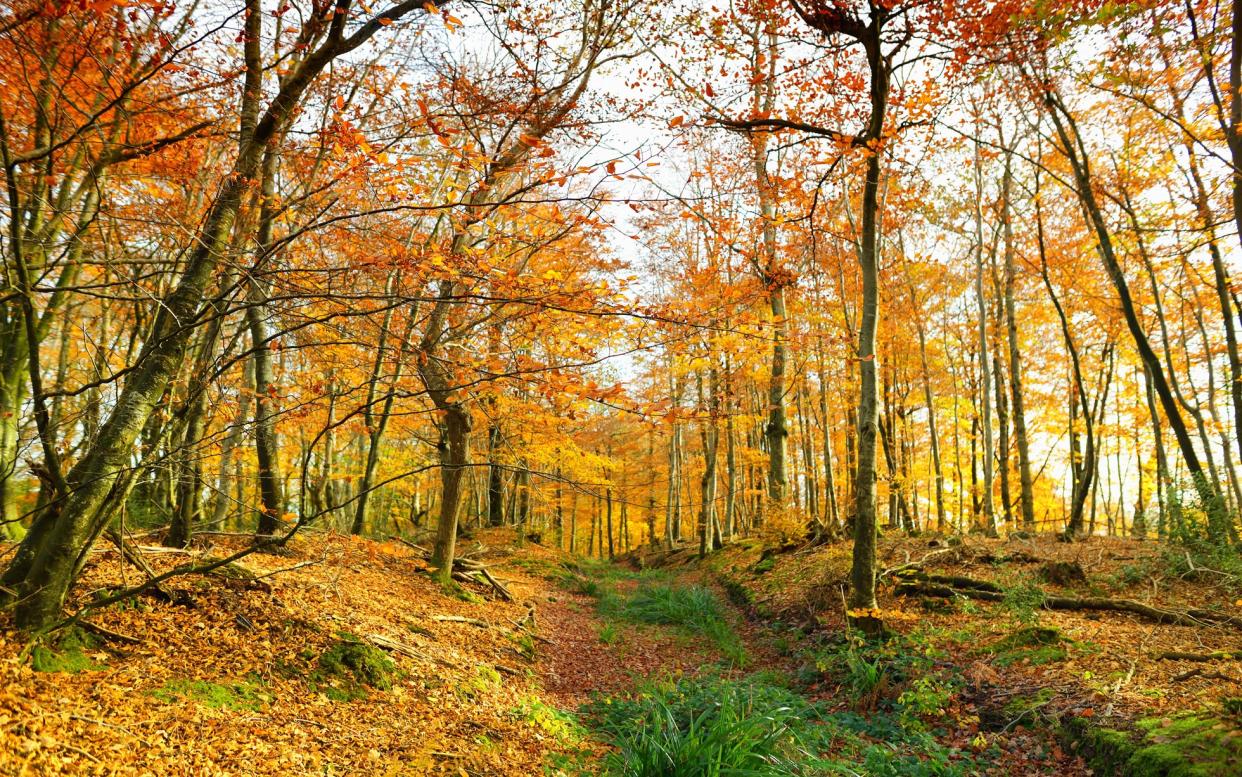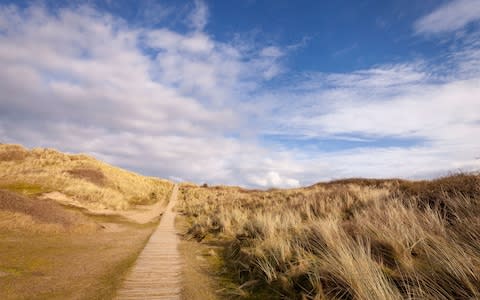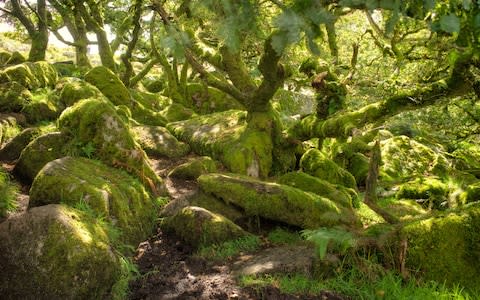The forgotten English forest that changed the face of the British countryside

Many of Britain’s beloved forests did not exist 100 years ago. After the Industrial Revolution and the First World War, the nation’s woodlands were severely depleted. But after the introduction of the Forestry Act 1919, Lord Clinton, a commissioner of the newly appointed Forestry Commission, planted its very first trees in Flashdown Woods on his Eggesford Estate on December 8 1919.
A century later and while Eggesford is still a working forest, providing a renewable source of timber, it is largely the domain of ramblers and dog walkers. It’s a quiet place, which means, rarely for a centenary, there won’t be a carnival welcome to celebrate today, unless you count the sepia-toned ticker tape parade of autumn leaves of course.
The first trees planted in Eggesford Forest were European larch, a particularly hardy, fast-growing and tall variety, and beech, the queen of British trees, which is slower growing. Since then, the woods have seen some more interesting and unusual trees sprout, including a Chile pine and a western red cedar.
To see the first trees planted by the Commission, head to Flashdown Woods where you’ll find several plaques commemorating the event tucked away, as well as the granite stone marker unveiled by the Queen in 1956 to celebrate the millionth acre of planting by the Forestry Commission. Another fun route is through Heywood Wood. Still part of Eggesford, here you’ll find the crumbling remains of an early medieval motte-and-bailey castle.
If you’re keen on a bit of charming architectural history, head for the train station. In 1854, the Earl of Portsmouth, the owner of the Eggesford Estate, said that the North Devon Railway could use his land but only if they allowed trains to stop here. The rural station is now a stop on the scenic Tarka Line, which connects Exeter to Barnstaple.

Of course, as mention of the Tarka Line would suggest, there is another way to see the area. Inspired by the fictional tales of Tarka the Otter by Henry Williamson, the Tarka Trail is a series of footpaths and cycle paths which run from Braunton on the North Devon coast to Meeth. The trail winds through Eggesford Forest and alongside the River Taw, where you can try to spot otters, before an easy four-mile circular walk around Eggesford. Alternatively, head to the neighbouring village of Chumleigh, where the Little Dart River boasts the largest population of wild otters in all of Britain.
While there’s little in the village, the Eggesford Crossing Cafe in the railway yard is perfect for a reviving coffee and slice of cream sponge. For something a little more substantial, try the Fox and Hound hotel (foxandhoundshotel.co.uk) on the banks of the Taw which serves everything from Devon-caught fish and chips to cream teas.
Further afield
An undulating forest of twisted, gnarly oaks, lichen-encrusted rowan trees and moss-smothered boulders, Wistman’s Wood in Dartmoor National Park is like something out of Grimms’ Fairy Tales. One of the wildest spots in North Devon, this National Nature Reserve is a bit of a schlep from Eggesford – an hour’s drive south of the forest – but its unspoilt, Tolkien-esque beauty is well worth the effort. Park opposite the Two Bridges Hotel and take a 10-minute stroll along the West Dart River. This untouched forest is shrouded in mystery and is not only rumoured to be haunted, but once home to a sacred grove where local Druids would practice pagan rituals.

If it’s more history you’re after, rather than more woodland, head an hour south-east in the car from Eggesford to the Killerton Estate (adults £13.60; nationaltrust.org.uk/killerton). This was once the sprawling 18th-century family home of Sir Francis Dyke Acland, who was instrumental in the creation of the Forestry Commission. Throughout the year, the estate, now owned by the National Trust, has celebrated the centenary with various events including an exhibition entitled Seeing the Wood and the Trees in recognition of Sir Francis’s significant contribution to forestry.
The house is currently dressed for a Georgian Christmas, inspired by Clement Clarke Moore’s poem Twas the night before Christmas (until January 5 2020), but there’s plenty to do all year round. The Tree Walk trails around the estate’s most interesting trees, including one of the first giant redwoods planted in England, the snake bark maple and the Indian horse chestnut. Alternatively, you can take a romp around the estate’s Ashclyst Forest – the largest forest in East Devon – or try to find the lost house of Columbjohn Wood, the foundations of an unfinished stately home which was hidden in the woods for 240 years.

Where to stay
There are multiple options for those keen to visit Eggesford. You can stay nearby in Treetops, a luxury treehouse built into a 250-year old larch tree in the grounds of the Fox and Hounds Hotel (sleeps 4; from £270 a night; foxandhoundshotel.co.uk).
Alternatively, you can splash out and book a weekend at Colleton Hall, a beautiful Elizabethan-Georgian manor house in nearby Rackenford. Aside from its lake and 13 acres of parkland, which attracts red deer, wild geese and heron, it also has its own 25-acre wood to romp around (sleeps 12; from £2,835 for a three-night weekend; oliverstravels.com)
Where to eat
Dine out on Devon’s finest at the Ginger Peanut in Bampton (mains from £14; gingerpeanut.co.uk) where chef Peter Mundy cooks with seasonal, local produce.
Or try the Le Petit Bouchée in Witheridge a teeny-tiny French bistro which started life in a vintage Citroën campervan (two courses from £22.50; lapetiteboucheebrasserie.co.uk).
Inspiration for your inbox
Sign up to Telegraph Travel's new weekly newsletter for the latest features, advice, competitions, exclusive deals and comment.


